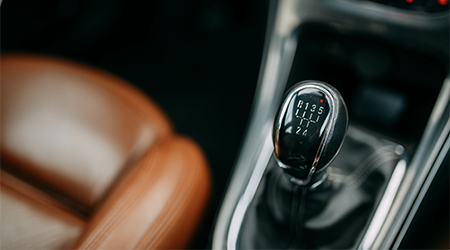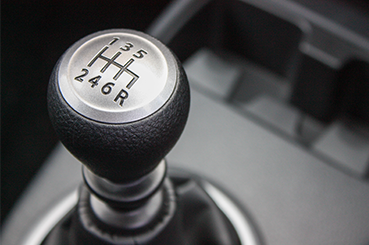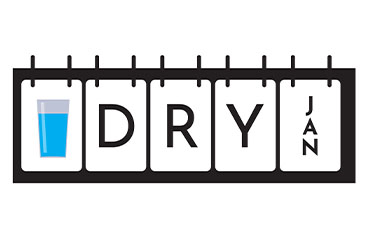Learning to drive a manual car can seem daunting at first, but with patience, practice, and a solid understanding of the fundamentals, it’s a rewarding skill that offers greater control over your vehicle.
Manual cars, also known as stick-shift vehicles, are often preferred by enthusiasts who value the sense of connection and precision they provide.
For new drivers, understanding the basics of manual driving will help you feel confident behind the wheel and prepare you to handle a wide range of driving conditions.

Manual vs Automatic
The debate between manual vs automatic cars has been ongoing for decades. A manual transmission car requires the driver to change gears manually using a clutch pedal and gear stick. This provides more direct control over the car’s performance, which is particularly useful for challenging road conditions like steep hills or snowy terrain. On the other hand, an automatic transmission takes care of gear changes for you, allowing for a simpler and more relaxed driving experience, especially in heavy traffic.
Many drivers see manual cars as more engaging, as they allow for finer control of speed and acceleration. However, automatics are undeniably convenient and are gaining popularity due to advancements in technology that improve efficiency and reliability. Ultimately, choosing between the two comes down to your driving preferences and lifestyle needs.
Are Automatic Driving Lessons Cheaper Than Manual?
In the UK, automatic driving lessons are typically more expensive than manual lessons. This is primarily because automatic cars are costlier to maintain and purchase, which increases the overhead costs for driving instructors. Additionally, there are fewer instructors specialising in automatic lessons, which can drive prices up due to higher demand.
However, automatic lessons may appeal to learners who find manual cars challenging or intimidating. The higher cost might be worth it if it means passing your test quicker and with less stress. If you’re on a tight budget, manual lessons are generally the more economical choice.
Can You Drive an Automatic Car with a Manual Licence?
One of the biggest advantages of learning to drive a manual car is the flexibility it offers. In the UK, passing your driving test in a manual car allows you to legally drive both manual transmission and automatic vehicles. This gives you more options when renting, buying, or borrowing a car.

However, if you take your test in an automatic car, your licence will be restricted to automatics. If you later decide to drive a manual, you’ll need to take another driving test, which can be time-consuming and costly. Learning in a manual car from the start can save you this hassle and open up more possibilities.
Are Manual Cars Cheaper to Buy?
When comparing the cost of manual vs automatic cars, manual vehicles are often the more affordable option to purchase. This is particularly true for entry-level models and older used cars, where manual gearboxes are more common. Automatics tend to come with a higher price tag due to the complexity of their gearboxes and the additional technology involved.
For budget-conscious buyers, the lower upfront cost of a manual car can make a big difference. Additionally, manual cars tend to hold their value better in markets where they remain popular, giving you more flexibility when it comes to resale.
Are Manual Cars Cheaper to Insure?
Insurance premiums for manual cars are generally lower than for automatics. This is because manual cars are perceived as simpler and cheaper to repair, which reduces the risk for insurers. Additionally, automatics are often associated with high-value models, which can drive up insurance costs.
However, your driving history, age, and the specific make and model of the car you choose will also have a significant impact on your insurance costs. While manual cars may offer slight savings, it’s always worth shopping around to find the best deal.
What Other Things Do I Need to Consider?
Learning to drive a manual car involves mastering several key skills that aren’t required when driving an automatic. While these skills can take time to develop, they ultimately make you a more confident and versatile driver.
Clutch Control:
One of the first things you’ll need to learn is how to control the clutch. The clutch allows you to disconnect the engine from the wheels to change gears smoothly.
Finding the clutch biting point—where the clutch engages, and the car begins to move—is critical.
At first, you may stall the engine as you practise, but with time, you’ll develop the muscle memory to handle it effortlessly.
Changing Gears:
Unlike automatic cars, manual vehicles require you to shift gears based on your speed and the road conditions.
This means you’ll need to stay attentive to the car’s engine sounds and performance, as well as anticipate when to shift up or down.
With practice, gear changes will become second nature.
Using a Handbrake:
Proper use of the handbrake is essential for hill starts and parking on inclines.
During your driving test, you’ll be assessed on your ability to start smoothly on a hill without rolling back.
Mastering this skill not only helps you pass the test but also builds your confidence for real-world driving situations.
How to Drive a Manual Transmission Car
Setting Off
- Begin by ensuring the gear stick is in neutral and the handbrake is engaged. Press the clutch pedal fully to the floor before starting the engine.
- Once the engine is running, select first gear by moving the gear stick into position. Release the handbrake while slowly lifting the clutch pedal to find the biting point.
- As you feel the car start to move, gently press the accelerator pedal to increase the engine’s power. Continue lifting the clutch pedal gradually, and the car will move forward.
- Avoid lifting the clutch too quickly, as this can cause the car to stall.
What is the Biting Point?
The biting point is the moment when the clutch plates start to engage, allowing power from the engine to transfer to the wheels. It’s a delicate balance that requires practice to perfect.
A high clutch biting point can indicate wear in the clutch system, while a low biting point might take some getting used to for new drivers. Learning to recognise this point is essential for smooth starts and gear changes.
Coming to a Stop
- To stop the car, press the clutch pedal fully to disengage the gears. This prevents the engine from stalling as you slow down.
- Gently press the brake pedal to reduce speed. If you’re coming to a complete stop, shift the gear stick into neutral.
- Engage the handbrake if necessary, such as when stopping on an incline or waiting at a traffic light. This ensures the car remains stationary without relying solely on the foot brake.
Is a Manual Better than an Automatic?
The decision between a manual gearbox vs automatic ultimately depends on your driving habits and personal preferences. Manual cars are ideal for drivers who enjoy being actively involved in the driving experience and prefer having full control over their vehicle. They’re particularly suited to rural areas, long-distance travel, and challenging driving conditions.
In contrast, automatics are perfect for urban environments with stop-and-go traffic, as they eliminate the need for constant gear changes. Modern automatic transmissions have improved significantly, offering better fuel efficiency and performance than older models. However, the simplicity of an automatic car comes at a higher price, both in terms of purchase cost and maintenance.

Final Thoughts
Whether you choose a manual car or an automatic car, the right option will depend on your specific needs, budget, and driving style. Learning to drive a manual car provides valuable skills and flexibility, even if you eventually switch to an automatic. While mastering a manual gearbox takes time, it’s a worthwhile investment that gives you a deeper connection to your vehicle and the road.
With patience and practice, you’ll soon find yourself confidently navigating the roads with ease. Happy driving!




